Is your child struggling with eczema, stubborn rashes, or early signs of acne?
Such skin issues can cause discomfort, affect their self confidence and even their sleep and learning. Getting appropriate treatments for your child from a skin specialist is important.
10+ years of clinical experience
Tailored specialist advice
Evidence-based treatment plans
Is your child struggling with eczema, stubborn rashes, or early signs of acne?
Such skin issues can cause discomfort, affect their self confidence and even their sleep and learning. Getting appropriate treatments for your child from a skin specialist is important.
10+ years of clinical experience
Tailored specialist advice
Evidence-based treatment plans
Common Types of Paediatric Dermatology Issues
Eczema
Paediatric eczema, also known as atopic dermatitis, is a common skin condition in children characterised by dry, itchy, and inflamed skin. It often appears on the face, elbows, and knees, causing discomfort and irritation. Early diagnosis and using prescribed treatments, can help control reactions and protect your child’s well-being.

Common Triggers and Causes
Genetics
Eczema often runs in families, indicating a genetic predisposition.
Environmental Allergens
Allergens like dust mites, pollen, or pet dander can contribute to flare-ups.
Irritants
Harsh soaps, detergents, or fabrics can irritate sensitive skin.
Weather Changes
Dry or humid conditions can impact skin hydration.
Stress
Emotional stress can trigger or worsen eczema symptoms.
FOOD ALLERGY
Some children may have allergies to certain foods which may cause eczema flare ups.
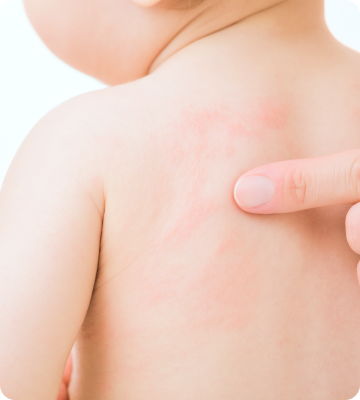
When to Seek Treatment?
Severe itching and discomfort
Fever or crusting of the skin
Persistent or worsening symptoms
Large or widespread areas
Poor sleep or difficulty concentrating in school
Concerns about allergies
Book an appointment
Ready to take the first step towards managing pediatric eczema?
Schedule a consultation with Livingstone Dermatology today.
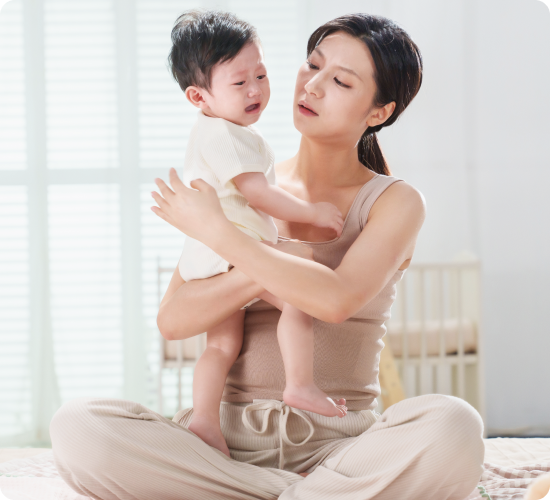
Paediatric Skin and Food Allergies
Pediatric skin and food allergies occur when a child’s immune system reacts to certain foods or environmental triggers, causing symptoms like hives, rashes, itching, or swelling. These reactions can range from mild skin irritations to more severe symptoms requiring medical attention. Early diagnosis and management, including avoiding triggers and using prescribed treatments, can help control allergic reactions and protect your child’s well-being.
Common Triggers and Causes
Peanuts and Tree Nuts
Eggs
Soy
Milk and Dairy Products
Wheat
Fish and Shellfish

When to Seek Treatment?
While most newborn rashes are harmless and resolve on their own, there are situations where medical attention is advised:
Severe reactions
Persistent or worsening symptoms
Widespread or severe skin issues
Multiple allergic reactions
Book an appointment
Ready to take the first step towards managing pediatric eczema?
Schedule a consultation with Livingstone Dermatology today.
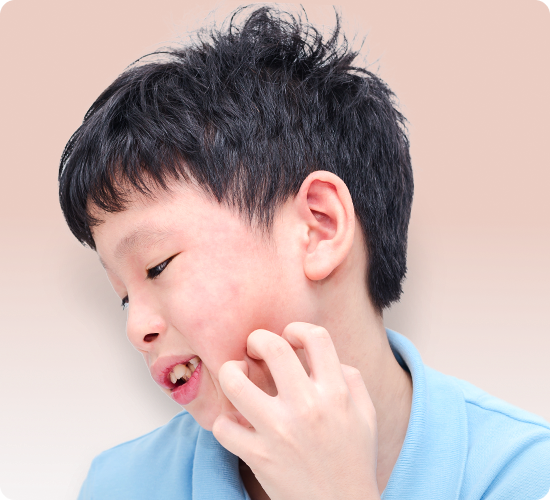
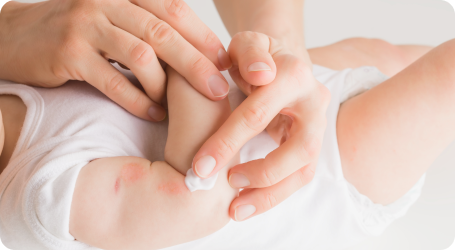
Newborn Rash
Newborn rashes are common skin conditions that appear on a baby’s skin shortly after birth. These rashes can take various forms, such as red bumps, blotches, or dry patches, and are usually harmless. Causes range from hormonal changes to sensitivities to clothing or environmental factors. Most newborn rashes resolve on their own, but gentle skincare and monitoring can help keep your baby comfortable.
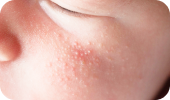
Milia
These are small, white or yellowish bumps that often appear on the face, particularly the nose and cheeks. They are caused by trapped keratin (a protein) in the skin.
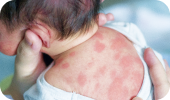
Erythema Toxicum
This is a common rash characterised by red blotches with small, pimple-like bumps in the center. It typically appears in the first few days after birth and can be found on the face, trunk, and limbs.
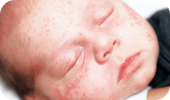
Baby Acne
Baby acne consists of red or white bumps on the skin, often on the cheeks, forehead, and chin. It is caused by the mother’s hormones still present in the baby’s body.
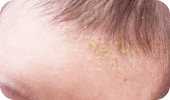
Cradle Cap (Seborrheic Dermatitis)
Cradle cap presents as thick, yellow, or brown scales on the scalp. It is not painful and is common in newborns.
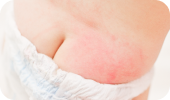
Diaper Rash
Diaper rash is a common irritation of the skin in the diaper area, characterised by redness and sometimes small bumps or sores.

When to Seek Treatment?
While most newborn rashes are harmless and resolve on their own, there are situations where medical attention is advised:
If the rash is spreading rapidly
If other concerning symptoms, such as fever or fussiness accompany the rash
If the rash is causing discomfort or seems painful for the baby
Book an appointment
Ready to take the first step towards understanding and managing newborn rash?
Schedule a consultation with Livingstone Dermatology today.
Birthmarks
Paediatric birthmarks are common skin abnormalities that appear on babies at birth or shortly after. They come in various types, shapes, and colors, and can range from being purely cosmetic to requiring medical attention. Here’s an overview of the different types of pediatric birthmarks:
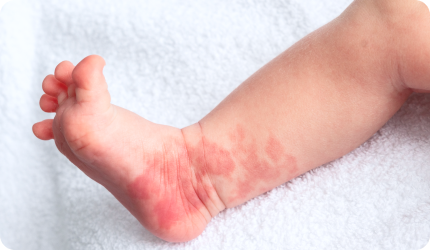
Vascular Birthmarks
Hemangiomas:
These are raised, often red or purple birthmarks caused by an overgrowth of blood vessels.
Port-Wine Stains:
These are raised, often red or purple birthmarks caused by an overgrowth of blood vessels.
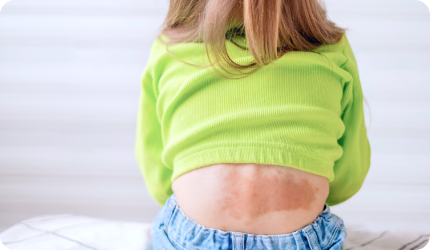
Pigmented Birthmarks
Moles (Congenital Nevi):
These are dark, pigmented spots present at birth or appearing shortly thereafter.
Café-au-Lait Spots:
These light brown spots may present at birth or develop in early childhood.
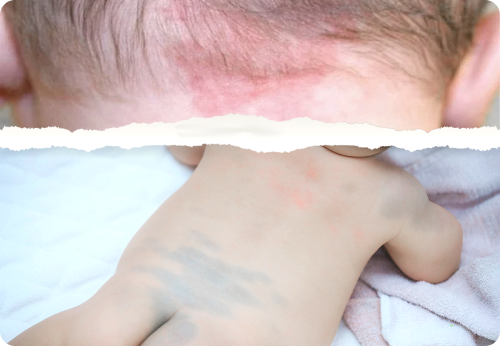
Other Birthmarks
Mongolian Spots:
These are blue-gray patches often found on the lower back or buttocks of infants.
Stork Bites (Salmon Patches):
These are flat, pink, or red patches, often found on the back of the neck or between the eyebrows.
When to Seek Treatment?
While many birthmarks are harmless and may fade over time, some may require evaluation and treatment, especially if they are:
Rapidly growing
Associated with other symptoms or syndromes
Interfering with vision, breathing, or mobility
Causing psychological distress
Book an appointment
Ready to take the first step towards understanding and managing birthmarks in your child?
Schedule a consultation with Livingstone Dermatology today.
Paediatric Skin Infections
Paediatric skin infections are common in children and can be caused by bacteria, viruses, fungi, or parasites. These infections are often contagious and may spread easily among children.
Common Types of Skin Infections in Children:
Bacterial Infections:
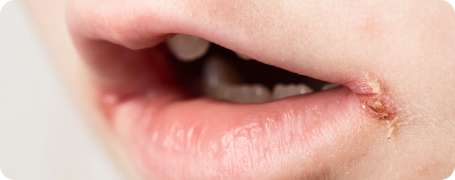
Impetigo
A highly contagious bacterial infection characterised by red sores that quickly rupture and develop a honey-colored crust.

Cellulitis
A bacterial skin infection that causes redness, swelling, and tenderness of the skin, often spreading rapidly.
Viral Infections:
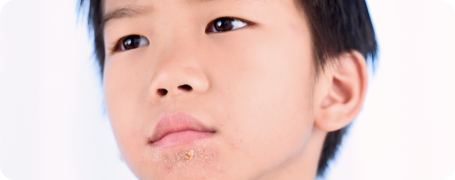
Herpes Simplex Virus (HSV)
HSV can cause painful cold sores or genital sores, characterised by fluid-filled blisters.
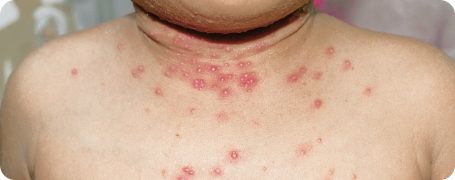
Molluscum Contagiosum
This viral infection leads to small, painless bumps on the skin.
Parasitic Infections:

Scabies
Caused by tiny mites, scabies leads to intense itching and a pimple-like rash.

Scabies
Caused by tiny mites, scabies leads to intense itching and a pimple-like rash.

When to Seek Treatment?
While most newborn rashes are harmless and resolve on their own, there are situations where medical attention is advised:
Signs of infection spread
Pain and discomfort
Pus or discharge
Fever or other systemic symptoms
Infection not improving
Recurring infections
Book an appointment
Ready to take the first step towards skin infection diagnosis and treatment for your child?
Schedule a consultation with Livingstone Dermatology today.

Book an appointment
Dr Sean Leong
Consultant Dermatologist
MBBS (Singapore), M.Med (Internal Medicine), MRCP (UK)
Dr. Sean Leong graduated from NUS in 2012 with a Bachelor of Medicine and Bachelor of Surgery, where he excelled academically and received numerous awards, including the VS Rajan Gold Medal in Dermatology. He subsequently obtained a Master of Medicine (Internal Medicine) and became a Member of the Royal College of Physicians of UK, before completing his Dermatology residency. Prior to joining Livingstone Dermatology, Dr. Leong gained valuable experience at National University Hospital and National Skin Centre, honing his skills in treating various dermatological conditions. He has also presented at international conferences and received recognition for his teaching and research contributions. He is currently also a Visiting Consultant at the National Skin Centre.
Dr. Leong is a dedicated dermatologist who is passionate about providing compassionate and comprehensive care to his patients. His areas of interest include general dermatology, eczema, acne and surgical dermatology.
10+ years of experience
Compassionate, evidence based practice
Your Journey to Healthy Skin Starts Here
Whether you’re dealing with a specific skin concern or seeking to enhance your natural beauty, Livingstone Dermatology is here to guide you on your journey to healthy, radiant skin.
Schedule an appointment today and experience the Livingstone standard of care in a welcoming, professional environment.

CONTACT US
Whatsapp: +6580705266
Call: +6580705266
LOCATION
10 Sinaran Drive #09-20 Novena Medical Center Singapore 307506
OPERATING HOURS
Monday: 8:30am – 7:30pm
Tuesday to Friday: 8:30am – 5:30pm
Sunday: 9:00am – 1:00pm
Closed on Sat and PH
